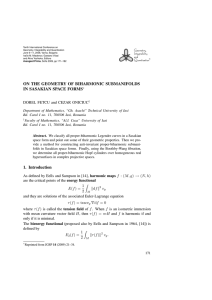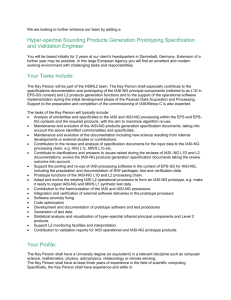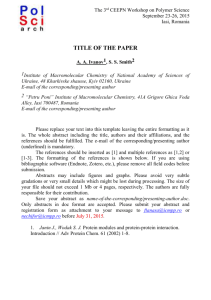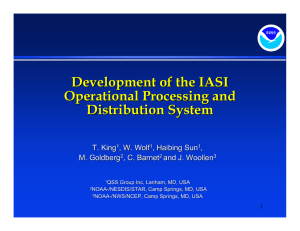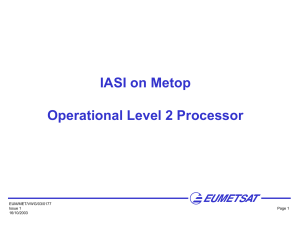Evaluation of IASI-NG impact on NWP and
advertisement
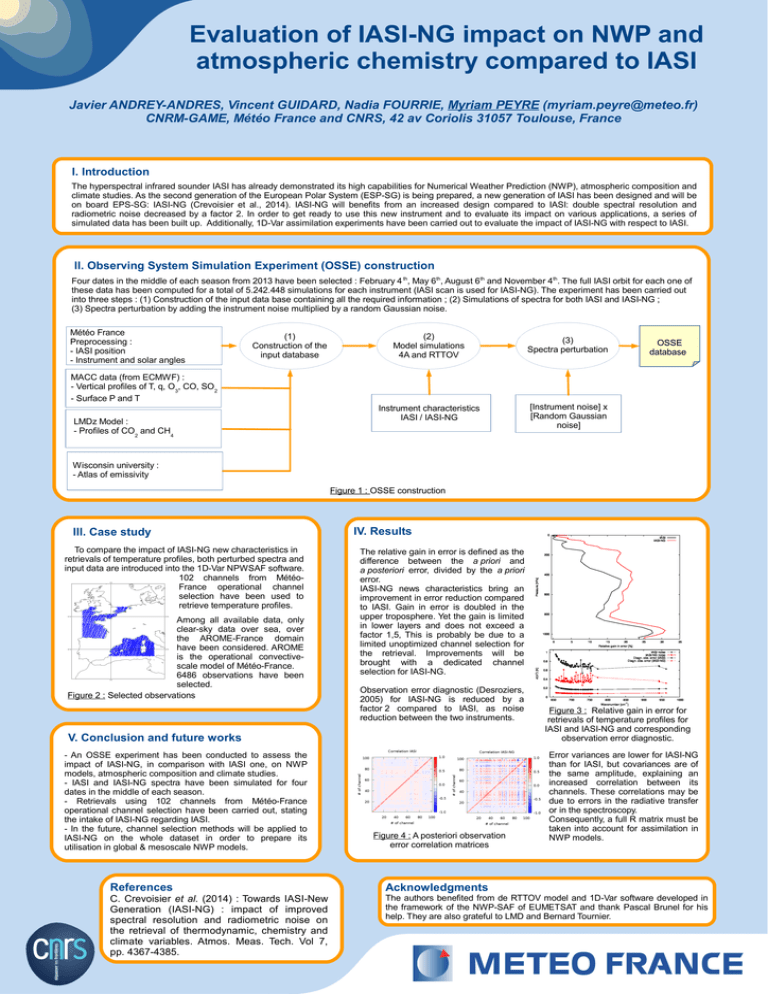
Evaluation of IASI-NG impact on NWP and atmospheric chemistry compared to IASI Javier ANDREY-ANDRES, Vincent GUIDARD, Nadia FOURRIE, Myriam PEYRE (myriam.peyre@meteo.fr) CNRM-GAME, Météo France and CNRS, 42 av Coriolis 31057 Toulouse, France I. Introduction The hyperspectral infrared sounder IASI has already demonstrated its high capabilities for Numerical Weather Prediction (NWP), atmospheric composition and climate studies. As the second generation of the European Polar System (ESP-SG) is being prepared, a new generation of IASI has been designed and will be on board EPS-SG: IASI-NG (Crevoisier et al., 2014). IASI-NG will benefits from an increased design compared to IASI: double spectral resolution and radiometric noise decreased by a factor 2. In order to get ready to use this new instrument and to evaluate its impact on various applications, a series of simulated data has been built up. Additionally, 1D-Var assimilation experiments have been carried out to evaluate the impact of IASI-NG with respect to IASI. II. Observing System Simulation Experiment (OSSE) construction Four dates in the middle of each season from 2013 have been selected : February 4 th, May 6th, August 6th and November 4th. The full IASI orbit for each one of these data has been computed for a total of 5.242.448 simulations for each instrument (IASI scan is used for IASI-NG). The experiment has been carried out into three steps : (1) Construction of the input data base containing all the required information ; (2) Simulations of spectra for both IASI and IASI-NG ; (3) Spectra perturbation by adding the instrument noise multiplied by a random Gaussian noise. Météo France Preprocessing : - IASI position - Instrument and solar angles (1) Construction of the input database (2) Model simulations 4A and RTTOV (3) Spectra perturbation Instrument characteristics IASI / IASI-NG [Instrument noise] x [Random Gaussian noise] MACC data (from ECMWF) : - Vertical profiles of T, q, O3, CO, SO2 - Surface P and T LMDz Model : - Profiles of CO2 and CH4 OSSE database Wisconsin university : - Atlas of emissivity Figure 1 : OSSE construction III. Case study To compare the impact of IASI-NG new characteristics in retrievals of temperature profiles, both perturbed spectra and input data are introduced into the 1D-Var NPWSAF software. 102 channels from MétéoFrance operational channel selection have been used to retrieve temperature profiles. Among all available data, only clear-sky data over sea, over the AROME-France domain have been considered. AROME is the operational convectivescale model of Météo-France. 6486 observations have been selected. Figure 2 : Selected observations IV. Results The relative gain in error is defined as the difference between the a priori and a posteriori error, divided by the a priori error. IASI-NG news characteristics bring an improvement in error reduction compared to IASI. Gain in error is doubled in the upper troposphere. Yet the gain is limited in lower layers and does not exceed a factor 1,5, This is probably be due to a limited unoptimized channel selection for the retrieval. Improvements will be brought with a dedicated channel selection for IASI-NG. Observation error diagnostic (Desroziers, 2005) for IASI-NG is reduced by a factor 2 compared to IASI, as noise reduction between the two instruments. V. Conclusion and future works - An OSSE experiment has been conducted to assess the impact of IASI-NG, in comparison with IASI one, on NWP models, atmospheric composition and climate studies. - IASI and IASI-NG spectra have been simulated for four dates in the middle of each season. - Retrievals using 102 channels from Météo-France operational channel selection have been carried out, stating the intake of IASI-NG regarding IASI. - In the future, channel selection methods will be applied to IASI-NG on the whole dataset in order to prepare its utilisation in global & mesoscale NWP models. Figure 4 : A posteriori observation error correlation matrices Figure 3 : Relative gain in error for retrievals of temperature profiles for IASI and IASI-NG and corresponding observation error diagnostic. Error variances are lower for IASI-NG than for IASI, but covariances are of the same amplitude, explaining an increased correlation between its channels. These correlations may be due to errors in the radiative transfer or in the spectroscopy. Consequently, a full R matrix must be taken into account for assimilation in NWP models. References Acknowledgments C. Crevoisier et al. (2014) : Towards IASI-New Generation (IASI-NG) : impact of improved spectral resolution and radiometric noise on the retrieval of thermodynamic, chemistry and climate variables. Atmos. Meas. Tech. Vol 7, pp. 4367-4385. The authors benefited from de RTTOV model and 1D-Var software developed in the framework of the NWP-SAF of EUMETSAT and thank Pascal Brunel for his help. They are also grateful to LMD and Bernard Tournier.

